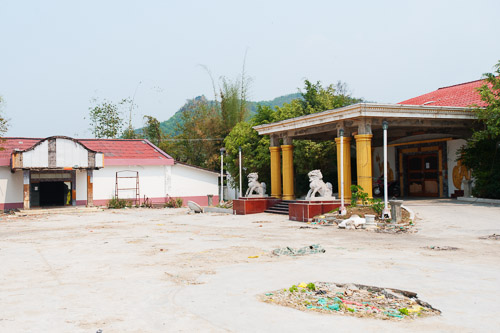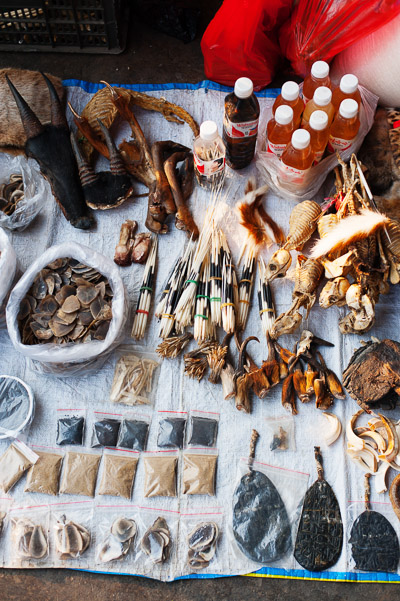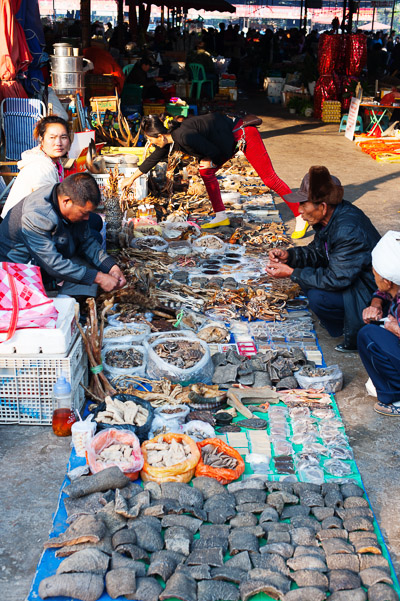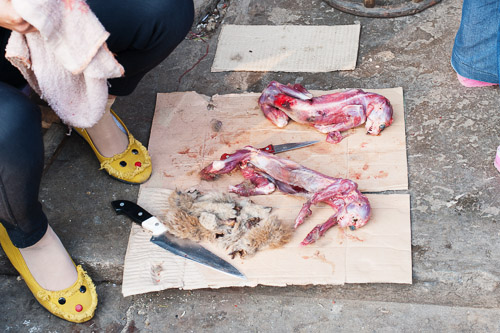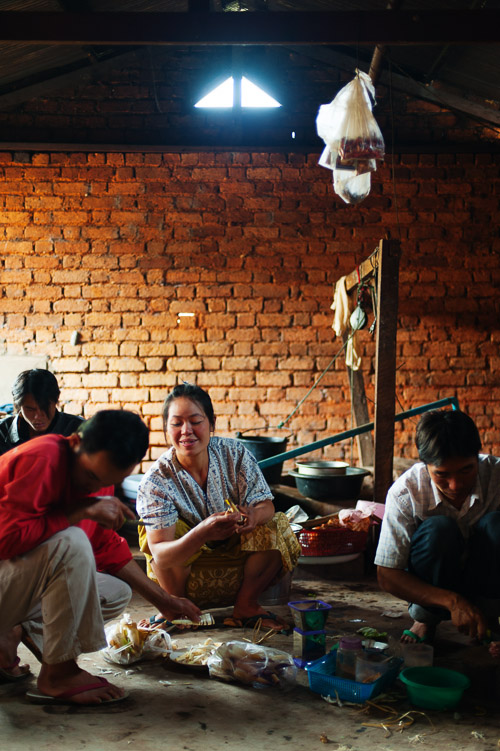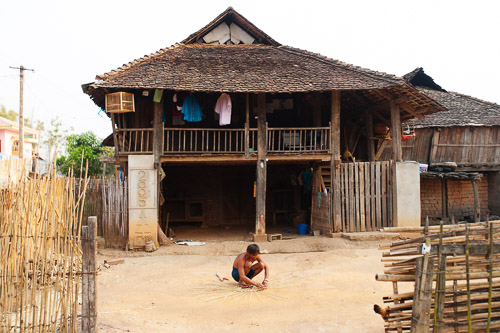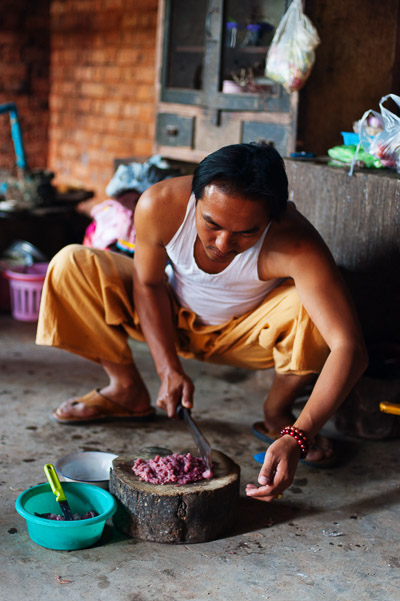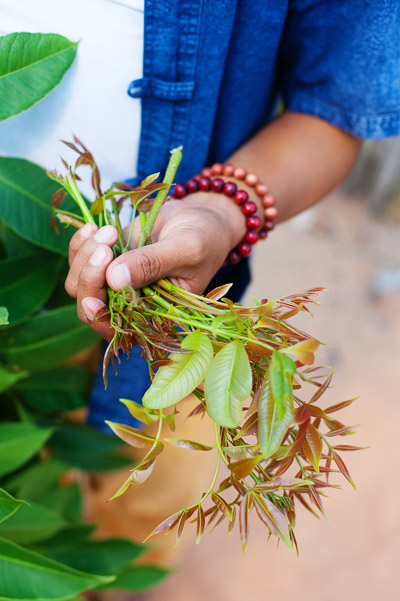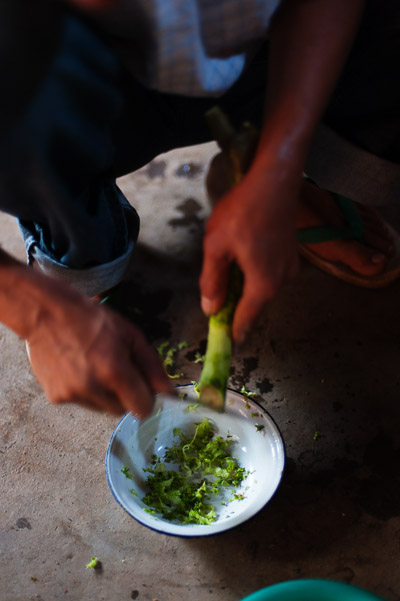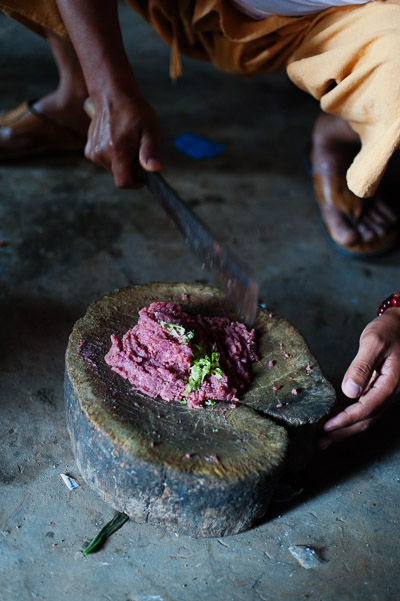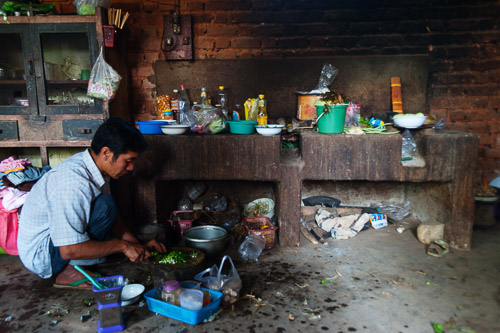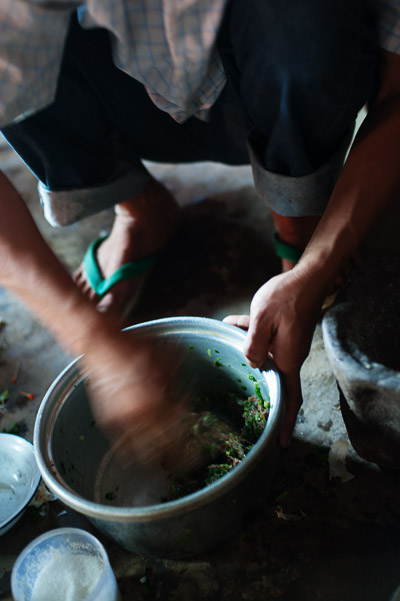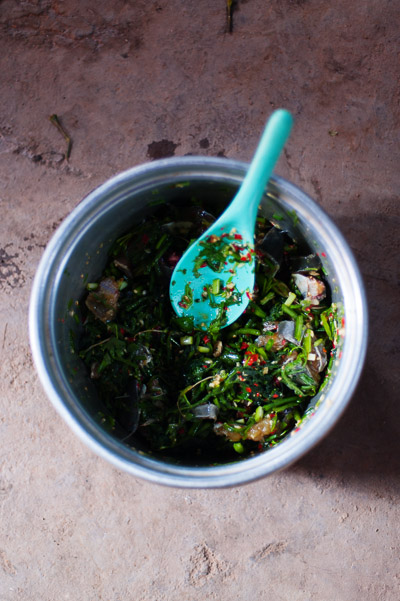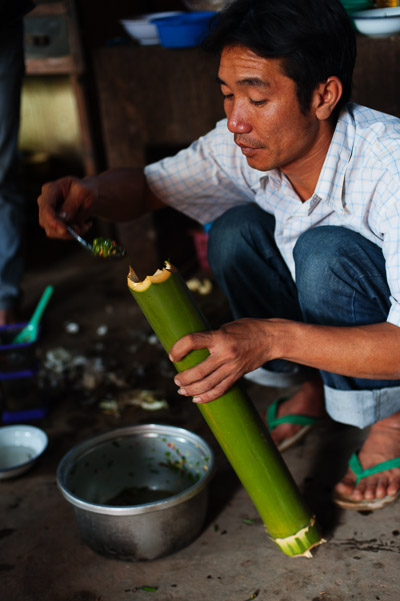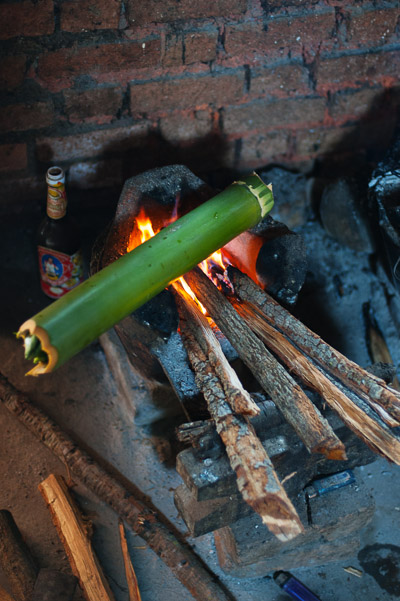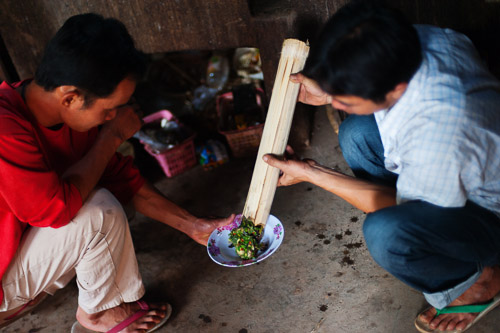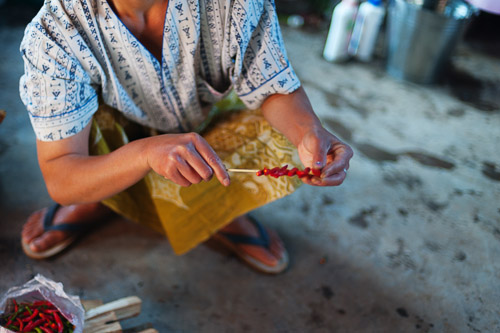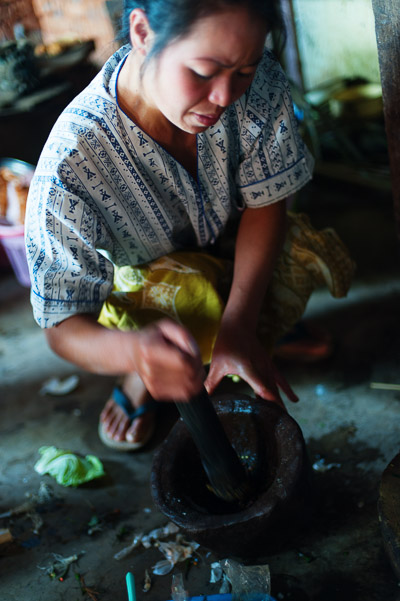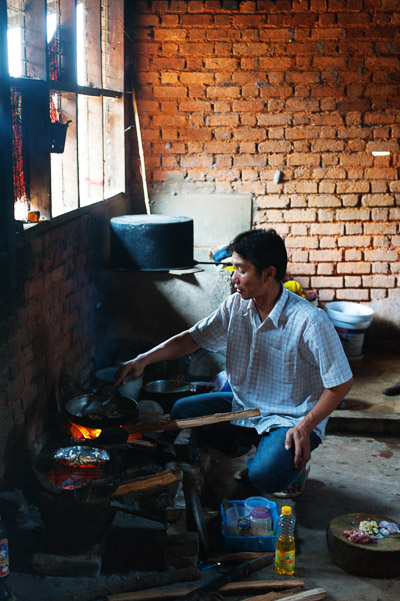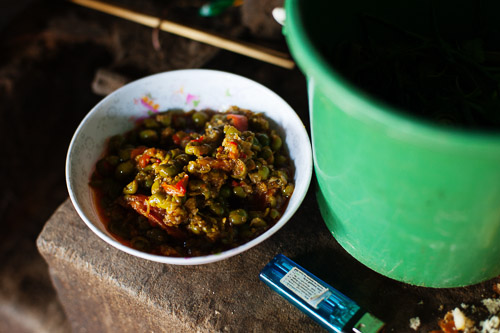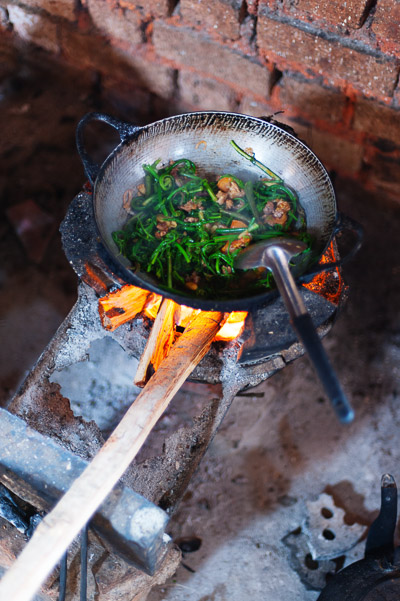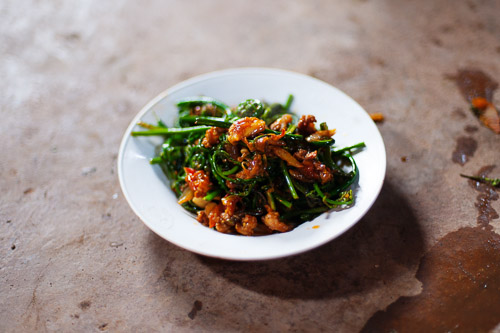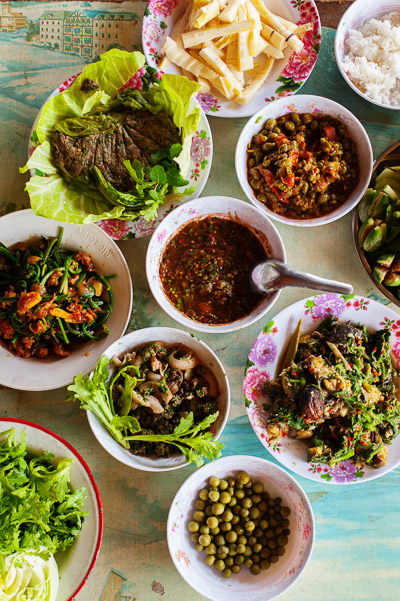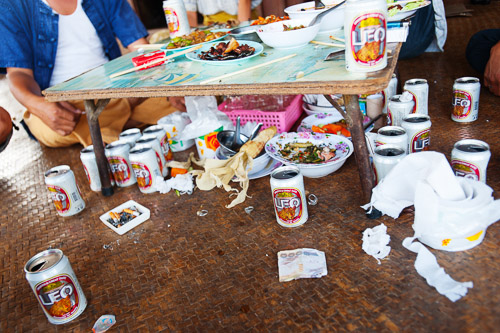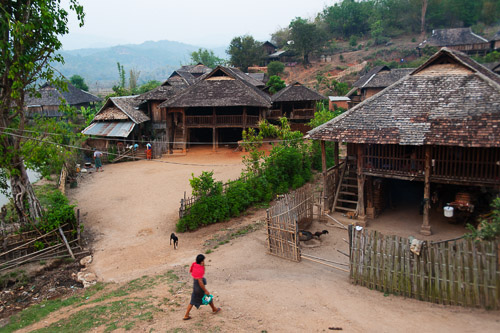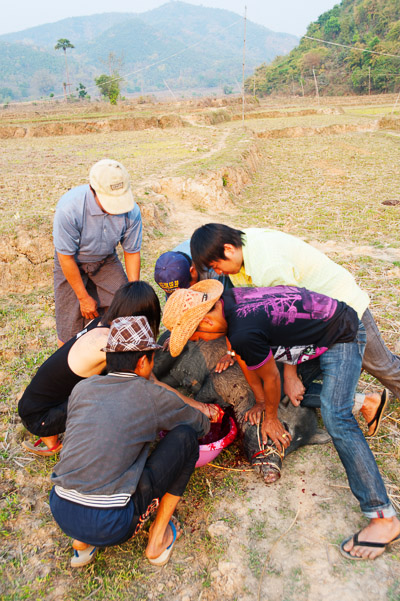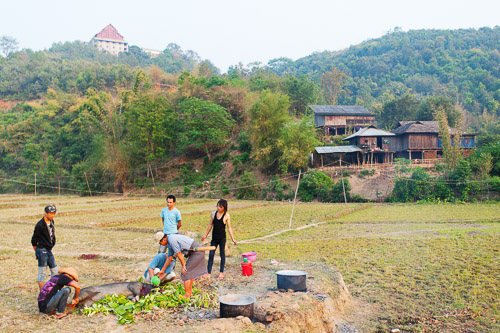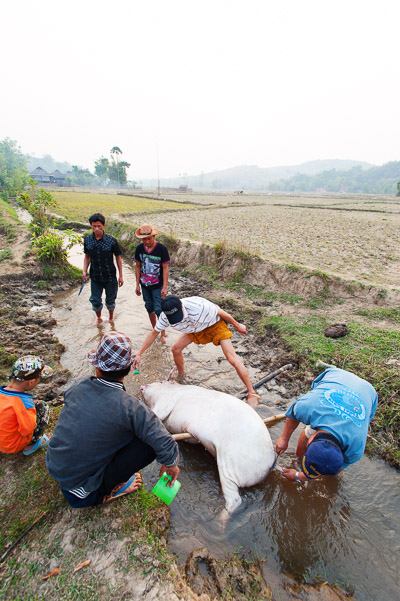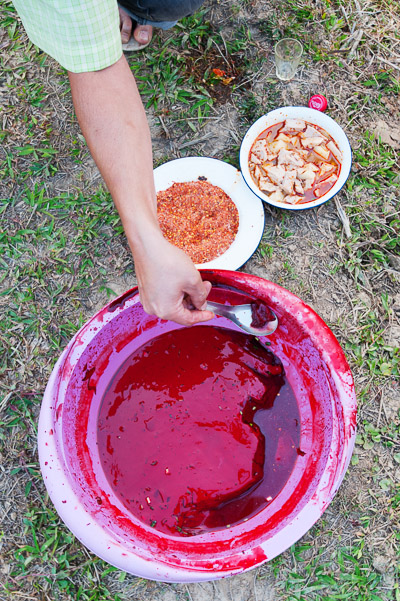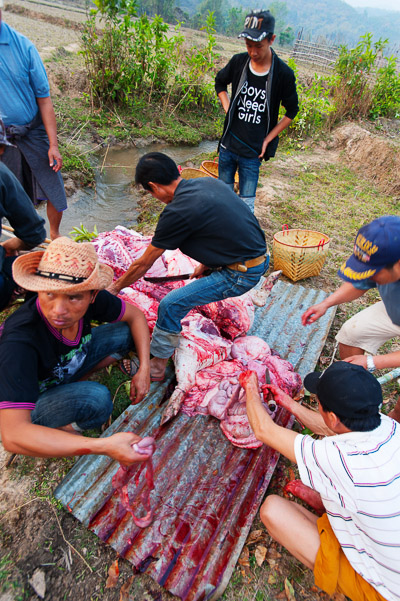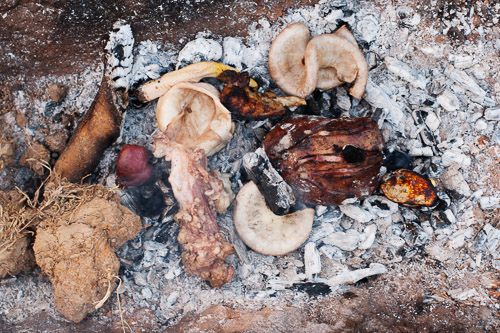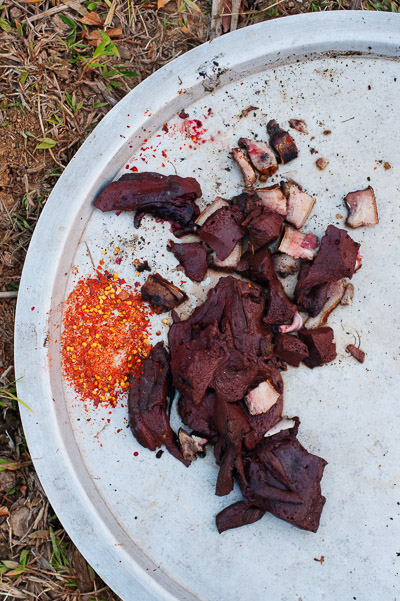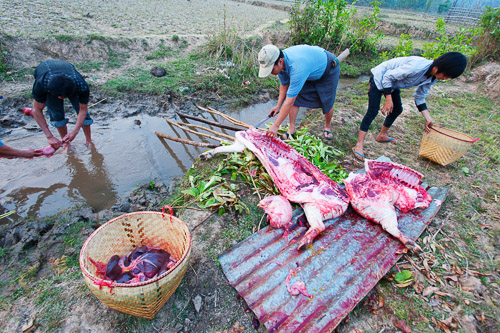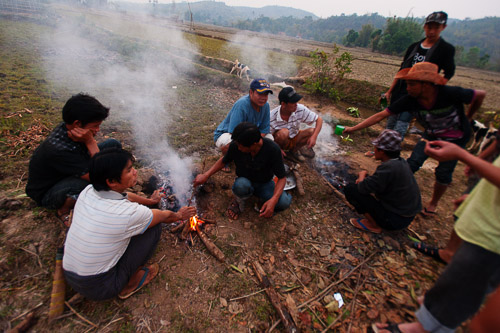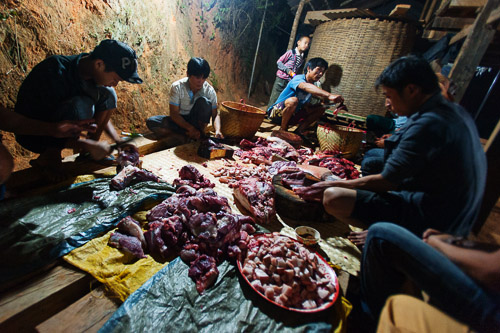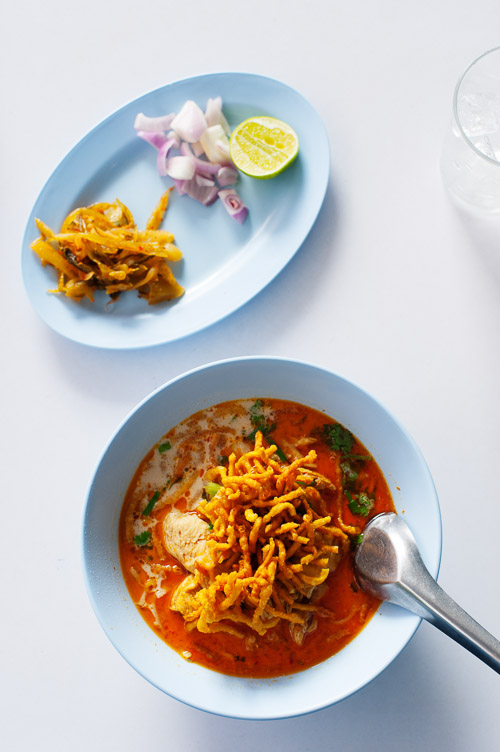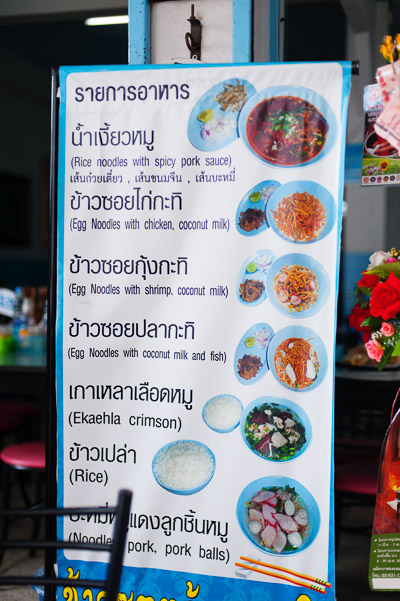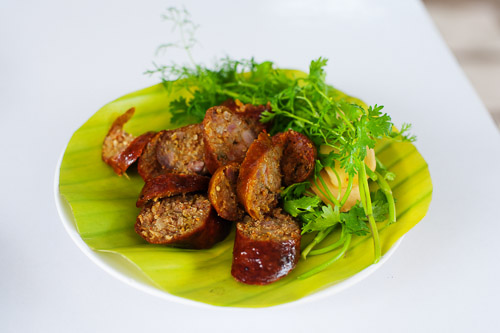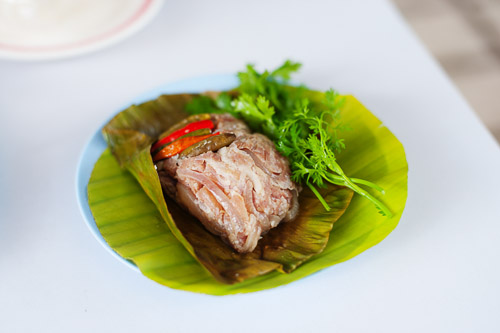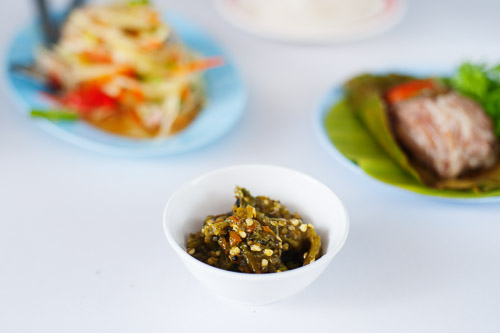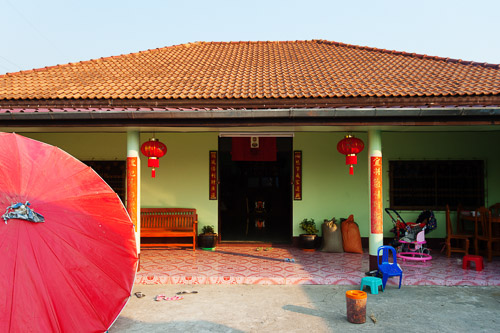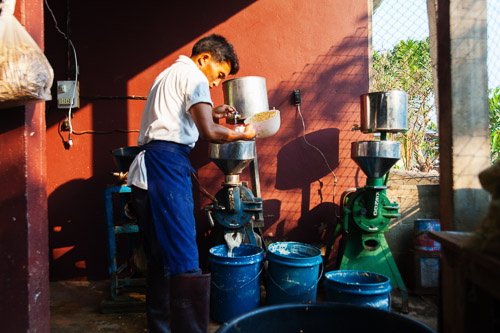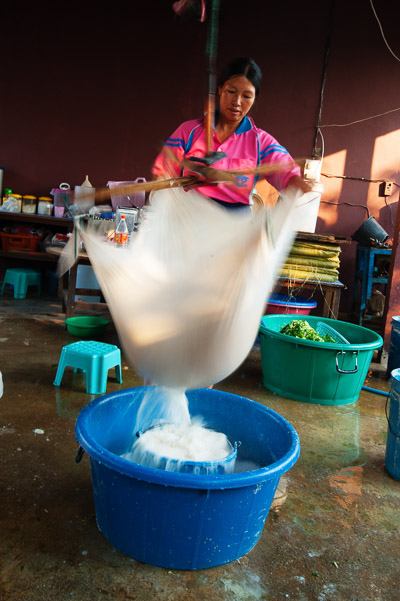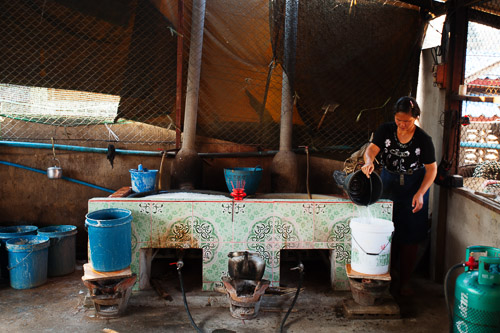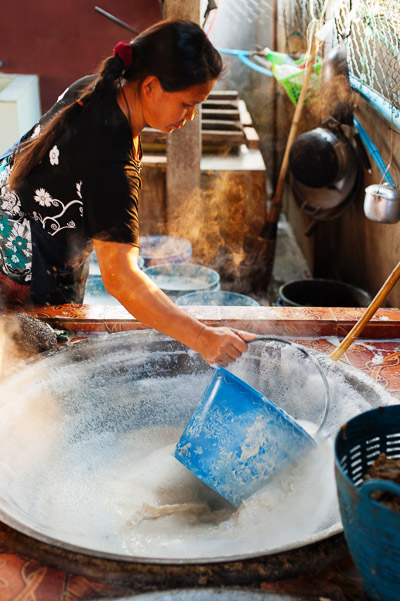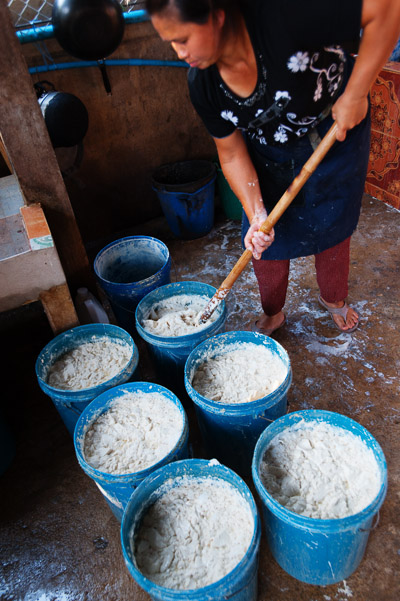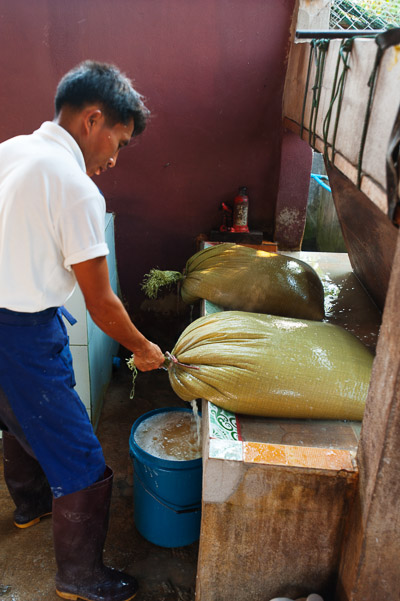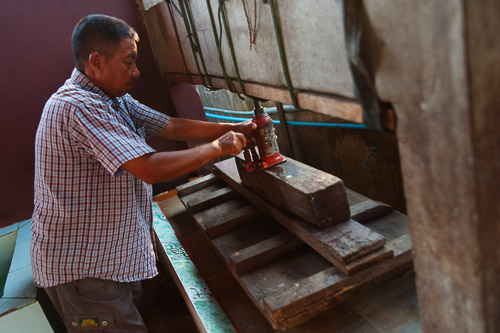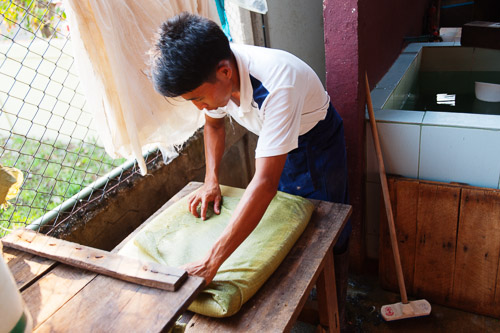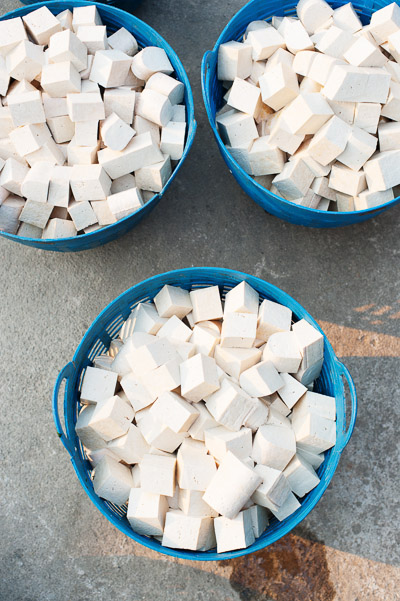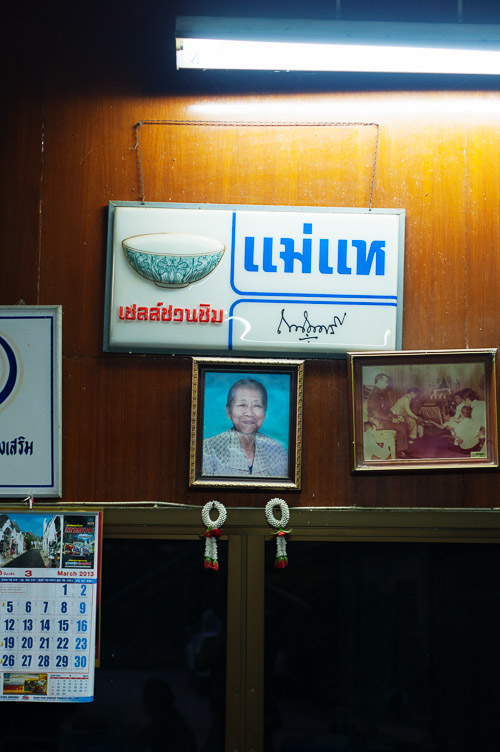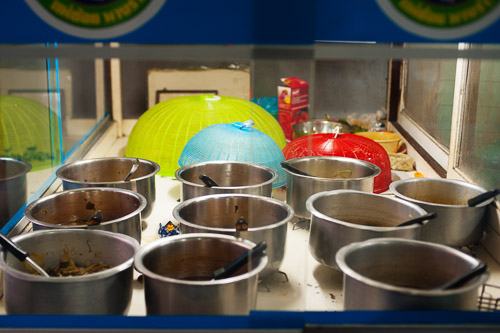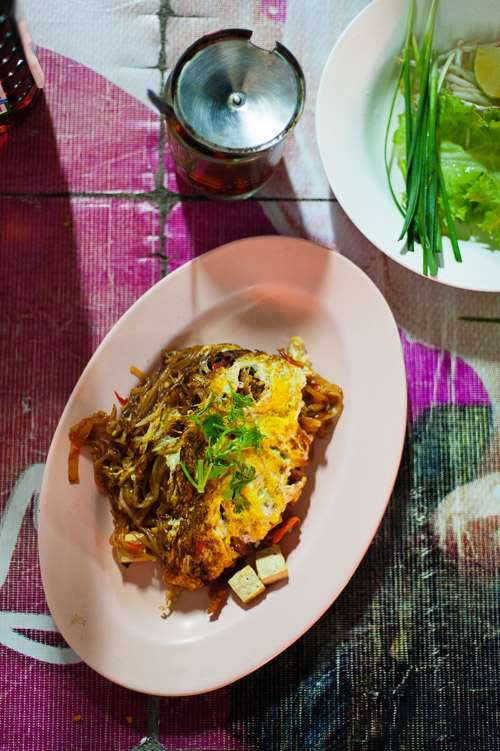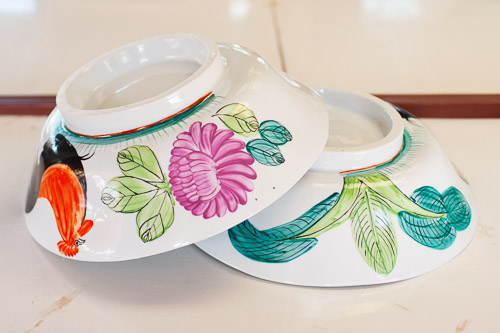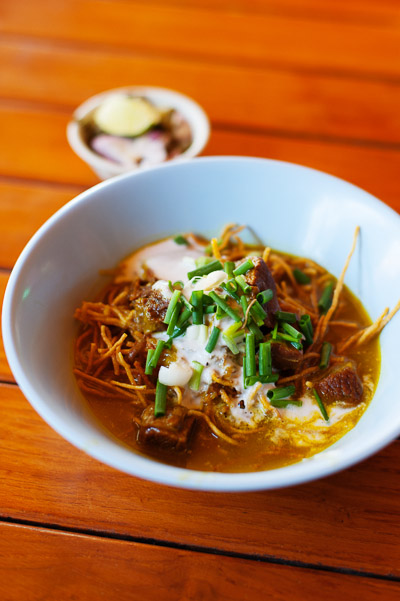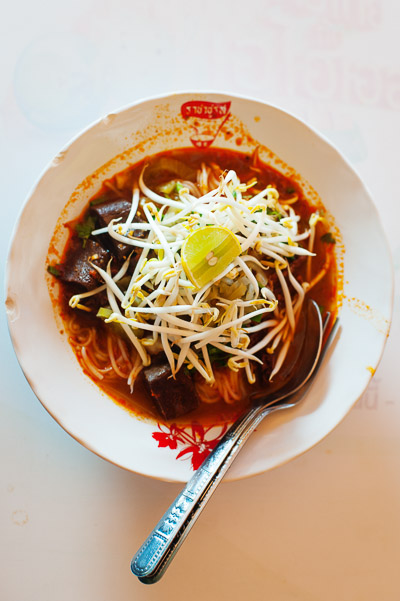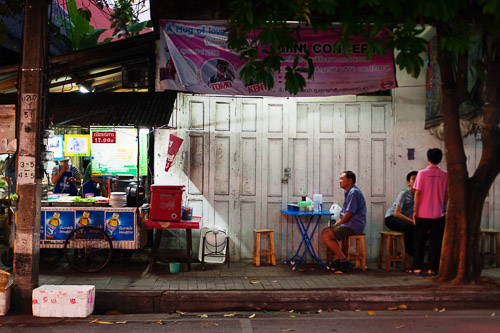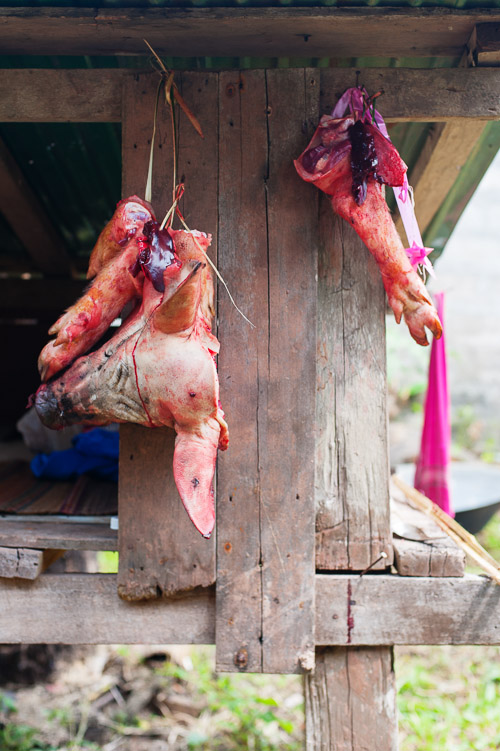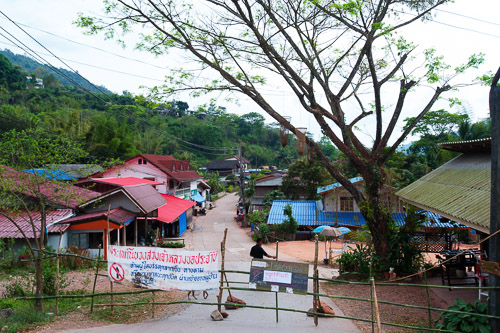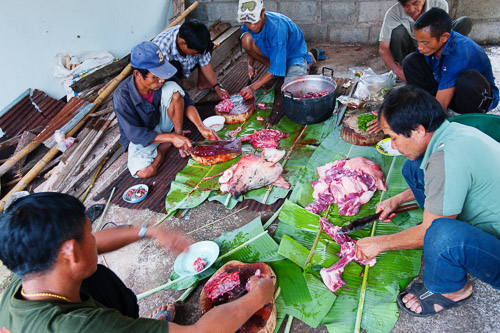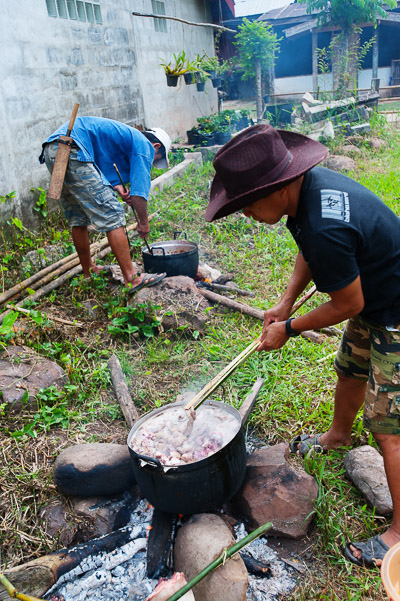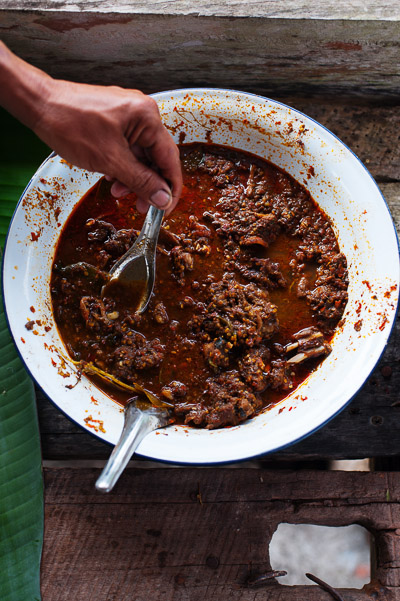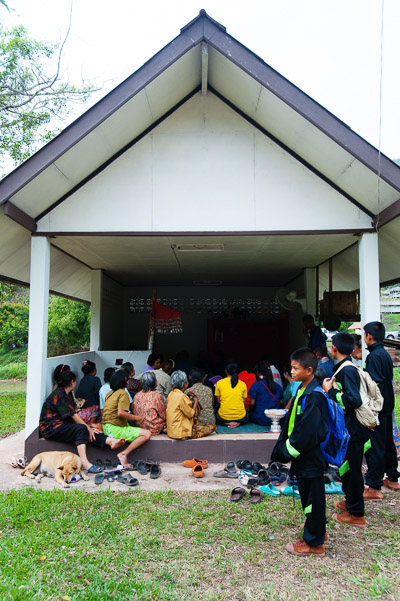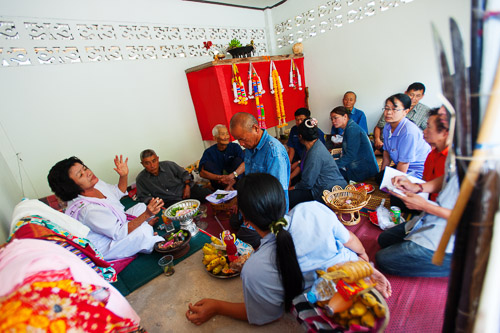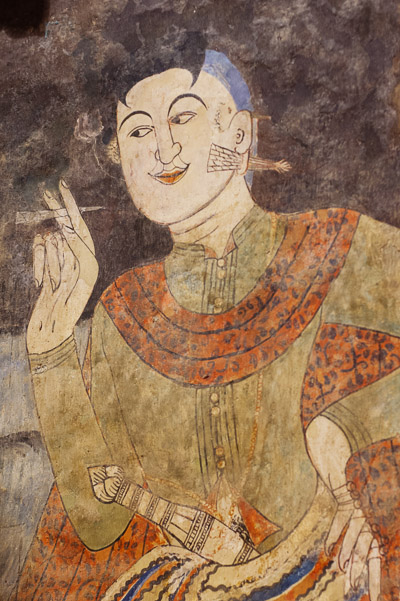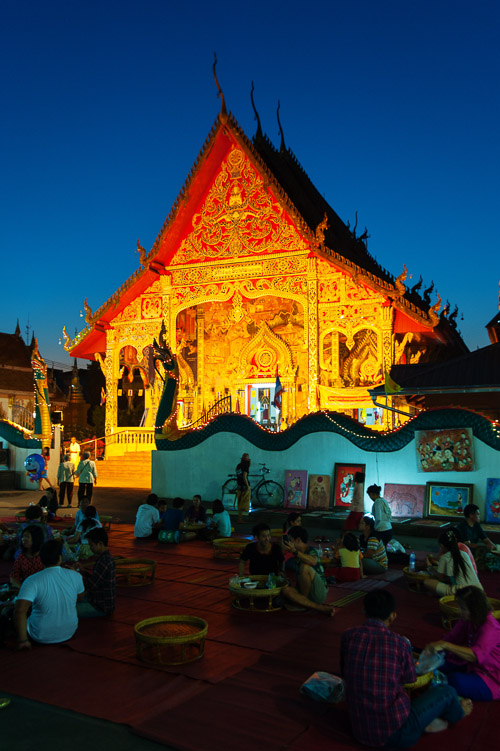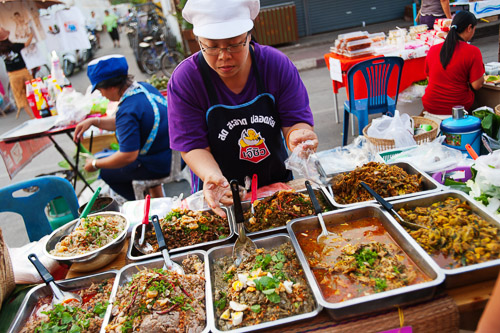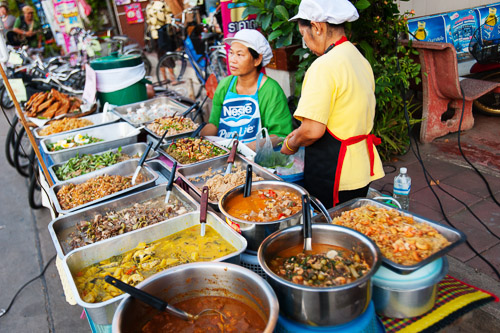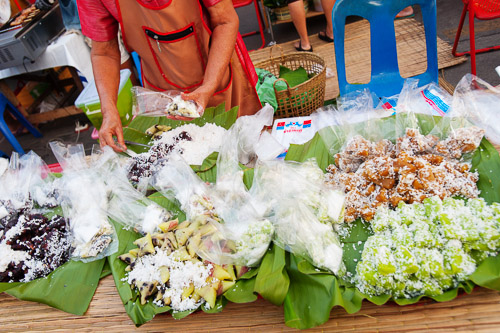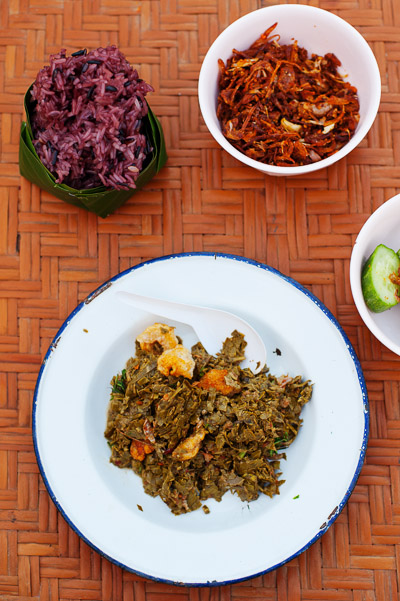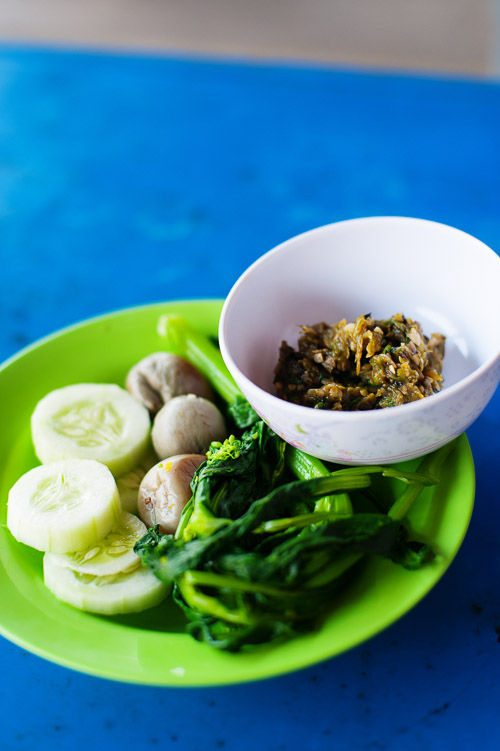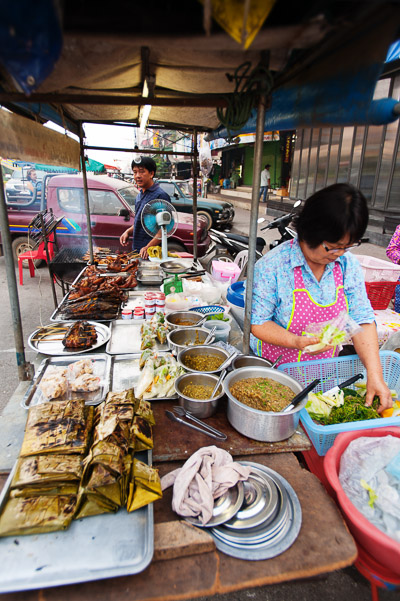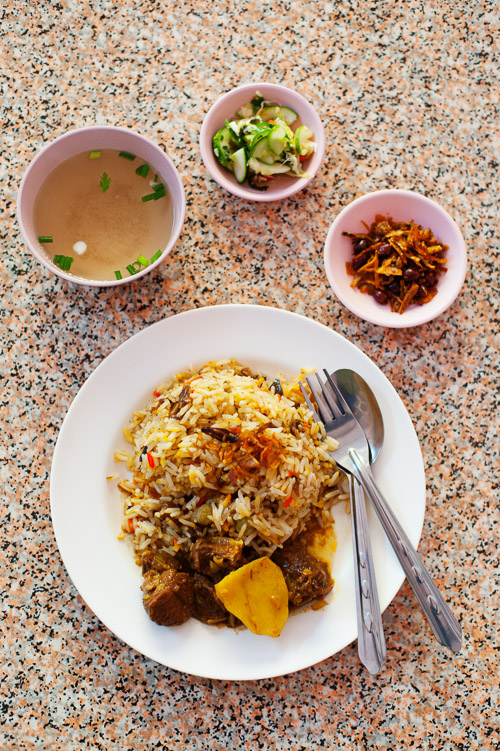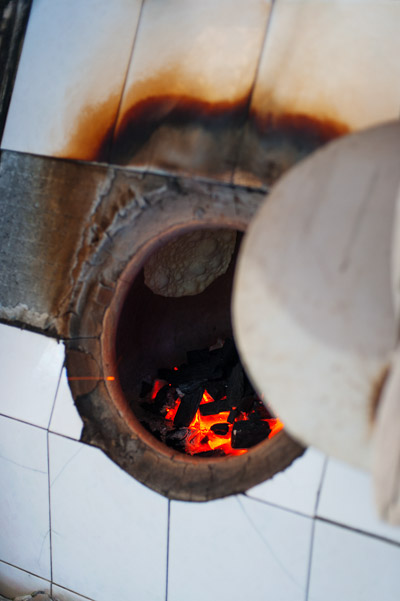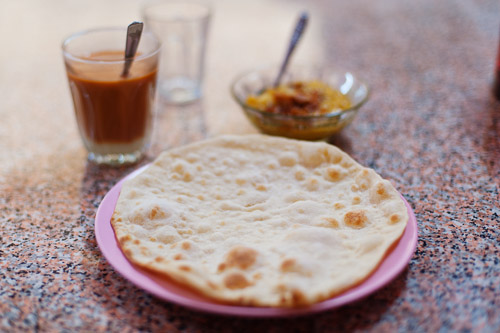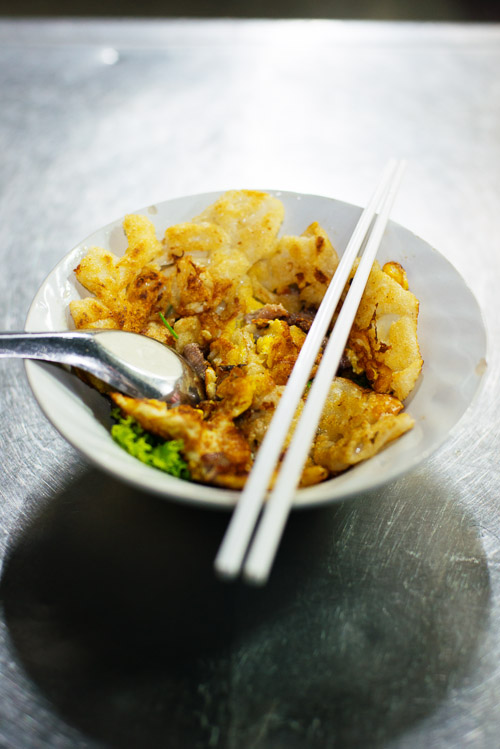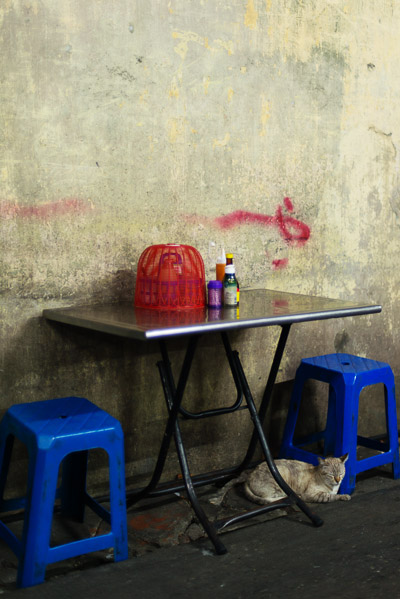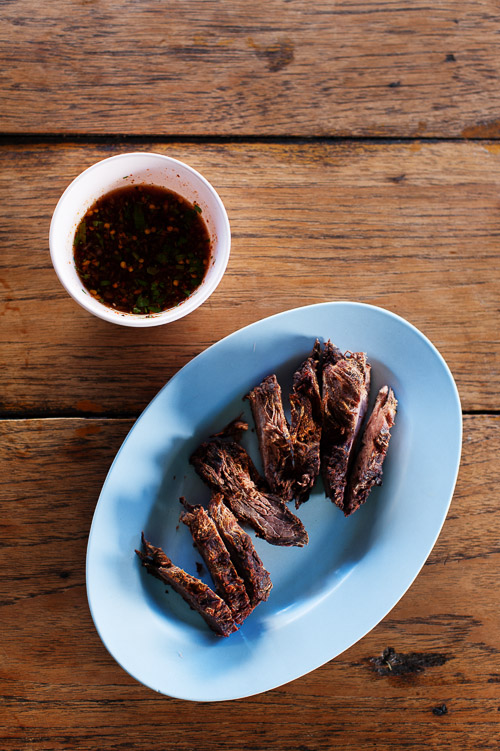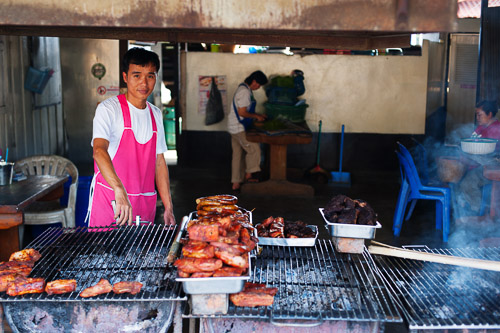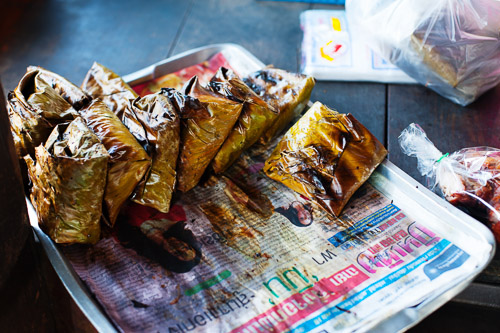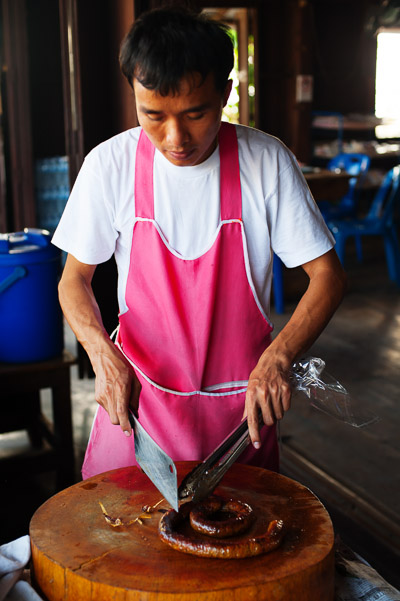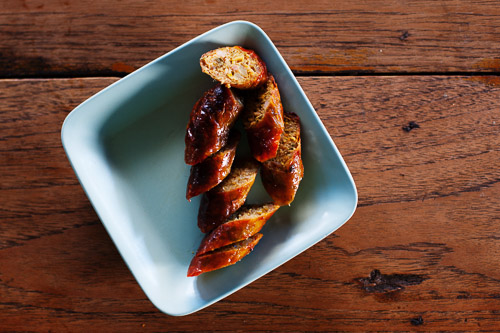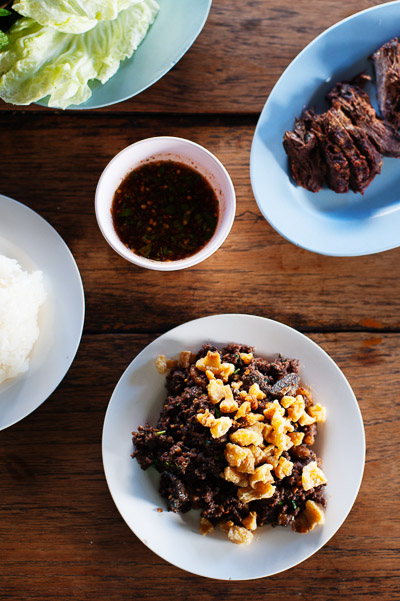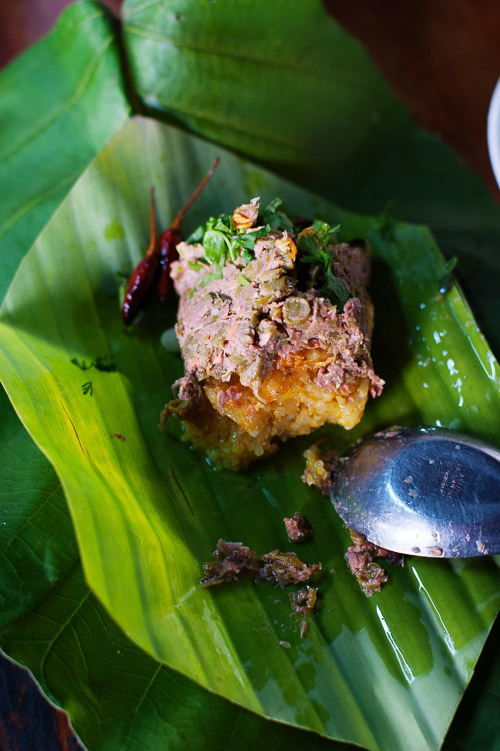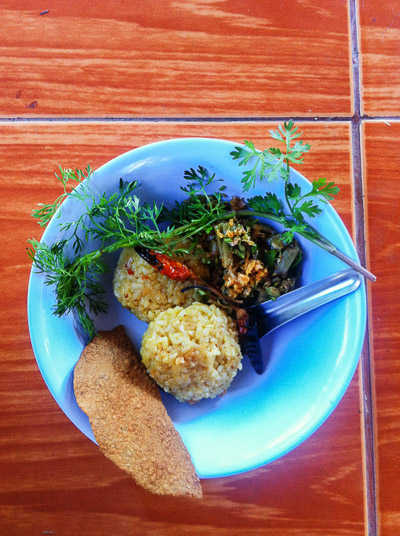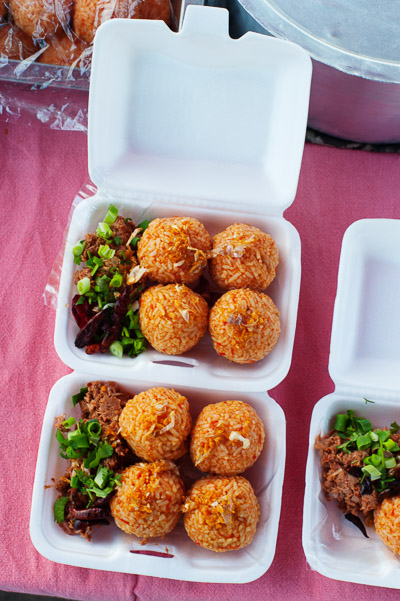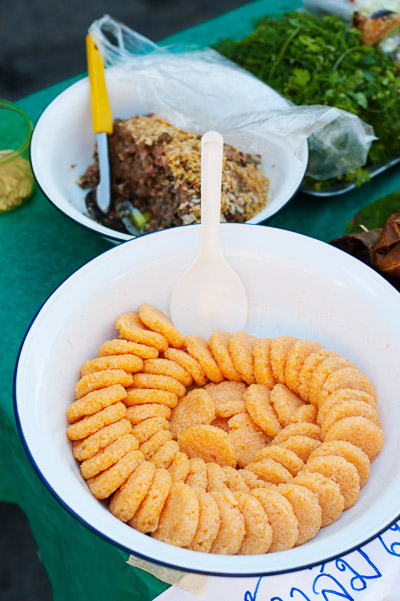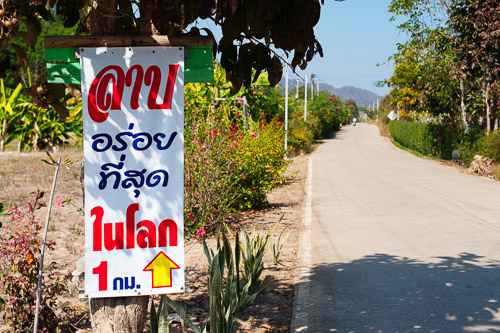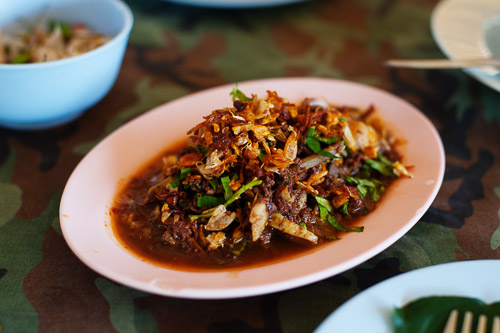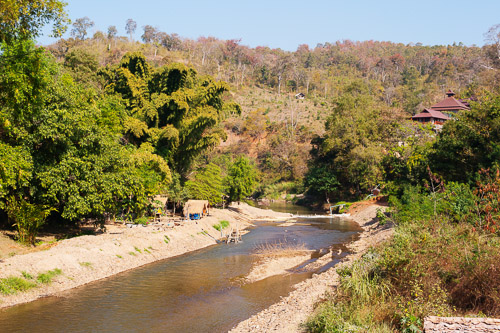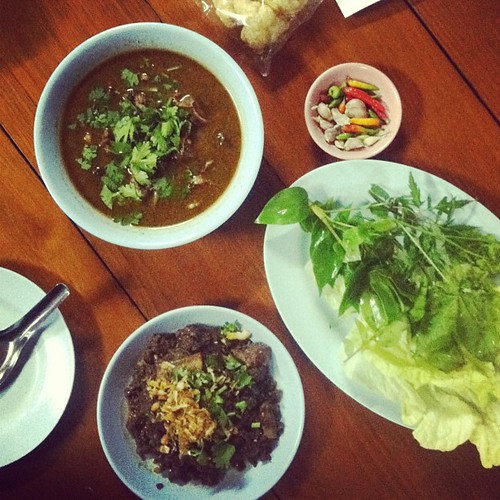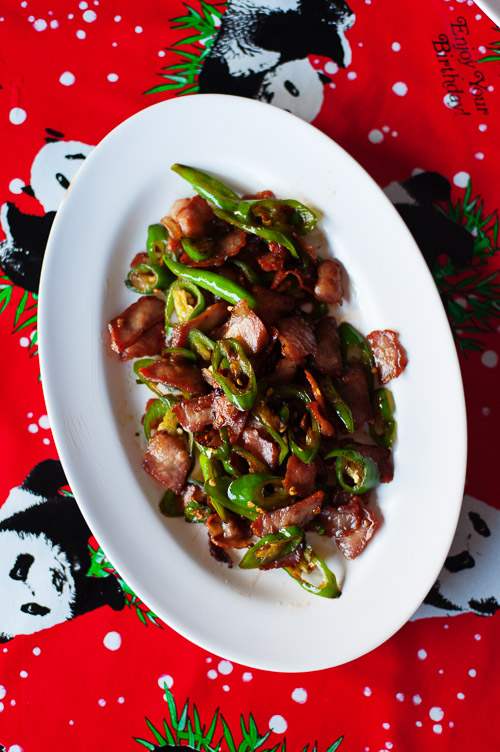 In the remote corners of northern Thailand, typically near the Myanmar border, are several villages that are more Chinese than Thai. Tea plantations, pine trees, steep hills and Chinese architecture make up the landscape of these places, which are also predominately populated by ethnic Chinese.
In the remote corners of northern Thailand, typically near the Myanmar border, are several villages that are more Chinese than Thai. Tea plantations, pine trees, steep hills and Chinese architecture make up the landscape of these places, which are also predominately populated by ethnic Chinese.
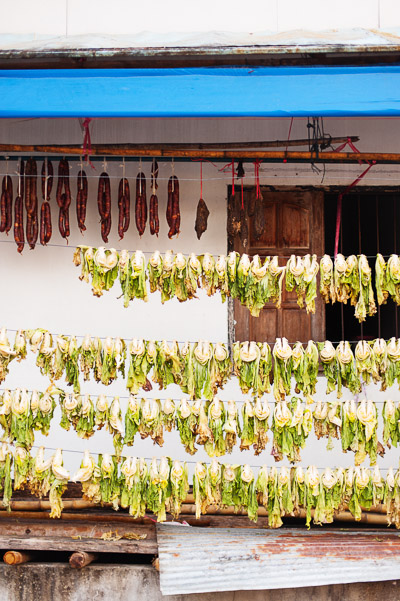
These villages, such as Mae Salong, in Chiang Rai, began to appear in northern Thailand in the early 1960s. From the current edition of Lonely Planet's Thailand guidebook:
Home Away From Home
Mae Salong was originally settled by the 93rd Regiment of the Kuomintang (KMT), who had fled to Myanmar from China after the 1949 Chinese revolution. The renegades were forced to leave Myanmar in 1961 when the Yangon government decided it wouldn't allow the KMT to remain legally in northern Myanmar. Crossing into northern Thailand with their pony caravans, the ex-soldiers and their families settled into mountain villages and re-created a society like the one they'd left behind in Yunnan.
After the Thai government granted the KMT refugee status in the 1960s, efforts were made to incorporate the Yunnanese KMT and their families into the Thai nation. Until the late 1980s they didn't have much success. Many ex-KMT persisted in involving themselves in the Golden Triangle opium trade in a three-way partnership with opium warlord Khun Sa and the Shan United Army (SUA). Because of the rough, mountainous terrain and lack of sealed roads, the outside world was rather cut off from the goings-on in Mae Salong, so the Yunnanese were able to ignore attempts by the Thai authorities to suppress opium activity and tame the region.
Infamous Khun Sa made his home in nearby Ban Hin Taek (now Ban Thoet Thai) until the early 1980s when he was finally routed by the Thai military. Khun Sa's retreat to Myanmar seemed to signal a change in local attitudes and the Thai government finally began making progress in its pacification of Mae Salong and the surrounding area.
In a further effort to separate the area from its old image as an opium fiefdom, the Thai government officially changed the name of the village from Mae Salong to Santikhiri (Hill of Peace). Until the 1980s packhorses were used to move goods up the mountain to Mae Salong, but today the 36km road from Pasang is paved and well travelled. But despite the advances in infrastructure, the town is unlike any other in Thailand. The Yunnanese dialect of Chinese still remains the lingua franca, residents tend to watch Chinese, rather than Thai, TV, and you'll find more Chinese than Thai food.
In an attempt to quash opium activity, and the more recent threat of yaa baa (methamphetamine) trafficking, the Thai government has created crop-substitution programs to encourage hill tribes to cultivate tea, coffee, corn and fruit trees.
Not surprisingly, along with culture, language and agriculture, the Chinese also brought their cuisine. The various dishes available at Thailand's KMT villages are often described by Thais as Yunnanese, but I suspect that they probably have origins in a variety of regional Chinese cuisines. In general, wheat plays a big role, and features in staples such as steamed buns and noodles; dried spices, including Sichuan pepper, are common; pickled vegetables and other preserved foods from the colder regions of China make appearances; and there are also some palpable Muslim influences. And best of all, these unique dishes are available in restaurants in the various towns.
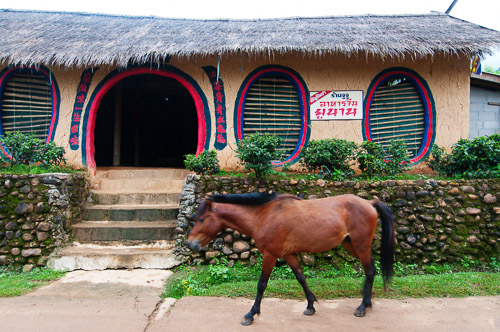
A few places to sample KMT-style Chinese food in northern Thailand include:
Gee Lee/จี๋หลี
Gee Lee, in the remote outpost of Ban Rak Thai (Love Thailand Village, formerly known as Mae Or), and dating back to the 1970s, is quite possibly the oldest restaurant in Thailand serving this type of food. The restaurant has a short menu of Thai KMT village staples, including black chicken stewed with Chinese spices (ไก่ดําตุ๋นยาจีน), stir-fried vegetables (done the Chinese way, with a pinch of salt, a dash of soy sauce, a smashed clove of garlic and lots of flame), an unusual stuffed omelet, and perhaps best of all, muu phan pii (หมูพันปี), 'thousand year-old pork', thin slices of braised pork belly surrounding a slightly sweet mound of minced pickled vegetables, and served with mantou, steamed buns:

Gee Lee Restaurant
Mae Or (Ban Rak Thai), Mae Hong Son
8am-7pm
View Thai Eats in a larger map
Yunnanese Restaurant/ร้านอาหารจีนยูนาน
Located a couple kilometres from Pai, Ban Santichon (Peace Village, yet another hyper-patriotic, Thai-imposed name) is arguably Thailand's most touristy-feeling KMT village. Several restaurants in the area do OK versions of the staple KMT dishes, as well as good bowls of noodles. At the largest of these, a no-name open-air shack, the noodles are hand-pulled, and come topped with a unique mixture of minced pork, par-boiled greens and ground peanuts and toasted sesame:
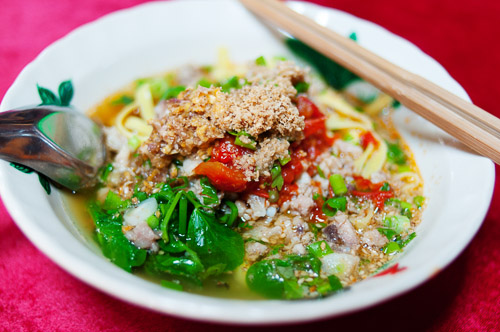
Yunnanese Restaurant
Ban Santichon, Mae Hong Son
8am-8pm
View Thai Eats in a larger map
Salema Restaurant/ร้านอาหารซาลีมา
The steep hills surrounding Mae Salong, in Chiang Rai, are home to Thailand's premier tea plantations:

so perhaps it's not a surprise that the leaves feature in the local cuisine.
Fresh tea leaf salad is available at all of the restaurants mentioned here, but typically it's served with sweet, tomatoey tinned mackerel. Before ordering the dish for the first time at Salema, I asked the eponymous owner if she used the stuff, and her face turned into a disgusted frown. "The taste is too strong," she said, and explained that she prefers the more neutral tinned tuna. She's right, and the result is the best version of the dish I've encountered: tart and nutty, with a subtle hint of dried spice that I wasn't able to identify (cumin?):
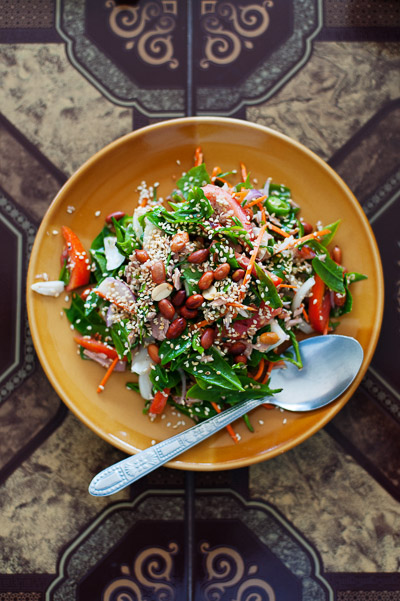
Salema also does an excellent beef curry, simple but tasty fried noodles, and a mild khao soi.
Salema Restaurant
Mae Salong, Chiang Rai
7am-8pm
View Thai Eats in a larger map
Seu Hai/ร้านอาหารซ่ือไห

Another ingredient found in nearly every former KMT village is muu naam khaang (หมูน้ำค้าง), 'dewdrop pork', so called because after being seasoned, the strips of pork belly are left to dry overnight:
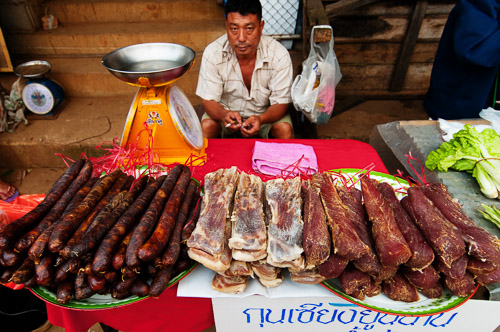
At Seu Hai, the pork is sliced thinly and fried with sliced green chili (pictured at the top of this post); it's a salty, spicy oily dish that's one of my favourite things to eat.
The restaurant also does a tasty salad of stringy-but-rich dried and deep-fried beef, good flash-fried vegetables, and hearty noodle dishes.
Sue Hai
Mae Salong, Chiang Rai
7am-9pm
View Thai Eats in a larger map
Restaurant Ting Ting/ร้านอาหารถิงถิง
An all-around solid restaurant, Ting Ting, in Ban Thoet Thai, does good versions of nearly all of the dishes listed above. In particular, they serve delicious kun chiang, the Chinese-style sausage that's sold in the morning markets of nearly all former KMT settlements:

Ting Ting's version, made in house, is spiced with just a bit of chili and Sichuan pepper. The sausage is simply sliced thinly and fried until crispy, and is served with rice.
Ting Ting also do a great muu phan pii and a warming soup of black chicken and Chinese spices.
Restaurant Ting Ting
Ban Thoet Thai, Chiang Rai
7am-9pm
View Thai Eats in a larger map
 Mong La is an odd place. Perhaps one of the oddest. Located on the Chinese border, the city lies within Myanmar, but is part of the semi-autonomous Wa State, a finger of land controlled by the United Wa State Army, an ethnic militia closely associated with drug production and trafficking. The Wa -- former headhunters -- have their own government, license plates (attached, almost exclusively, to white, '90's era sedans) and road signs. Chinese is the lingua franca in Wa State, and the Chinese Yuan is the accepted currency. Mong La is one of the few cities in all of Myanmar to have electricity 24 hours a day.
Mong La is an odd place. Perhaps one of the oddest. Located on the Chinese border, the city lies within Myanmar, but is part of the semi-autonomous Wa State, a finger of land controlled by the United Wa State Army, an ethnic militia closely associated with drug production and trafficking. The Wa -- former headhunters -- have their own government, license plates (attached, almost exclusively, to white, '90's era sedans) and road signs. Chinese is the lingua franca in Wa State, and the Chinese Yuan is the accepted currency. Mong La is one of the few cities in all of Myanmar to have electricity 24 hours a day.













